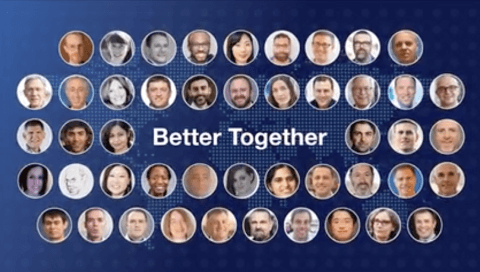Genetics
Going “all in” with liver disease genetics
October 03, 2022
The “Team Science” approach leading to the discovery of CIDEB mutations that protect from liver disease
By: Luca A. Lotta, MD, PhD, Vice President, Head of Cardiometabolic and Musculoskeletal Disease Genetics

The discovery of naturally occurring genetic mutations that protect individuals from disease paves the way for new therapeutic approaches for conditions with unmet medical need. It is one of the biggest journeys in the creation of medicine – and it can only be achieved through teamwork.

In late 2019, the Regeneron Genetics Center® (RGC) team embarked on a noteworthy research initiative. We had previously uncovered a common mutation in the HSD17B13 gene that was associated with protection from liver disease, and this time we set our sights on something bigger: finding mutations with even larger protective associations in and potentially new therapeutic approaches for nonalcoholic steatohepatitis (NASH), a liver disease with no approved therapies.
That said, it’s no easy task to estimate the impact of rare genetic mutations on disease risk. It requires a large dataset that no one scientist can build on their own, a team of scientists to analyze a mountain of data, and a diverse set of skills to connect the dots and uncover associations. But we knew we could make it happen. Our data resources and our collaborative network of experts in genetics, sequencing, analysis, experimental biology, statistics, medicine, imaging, and other related fields, had grown over ten-fold since our HSD17B13 finding. Plus, we could now leverage a diverse dataset of about 540,000 individuals with detailed liver health records, making this the largest ever exome-sequencing study of liver disease.
Our results exceeded our expectations. We found rare mutations in the CIDEB gene, with a protective association effect several times larger than any previously identified protective mutations in liver disease. Furthermore, our team of biologists and imaging scientists at RGC and Regeneron showed that silencing CIDEB can reduce lipid droplet size in liver cell lines. This discovery is now published,1 and has empowered the development of new possible RNA interference therapies in NASH.
Looking back, it was the coordinated efforts and daily progress of all the members of our massive, committed team that culminated in our breakthrough discovery. It reminds us of what we can achieve in science when we come together as a team and go “all in.”
Ensemble cast
The intense collective effort underpinning this research—especially given the global pandemic—was remarkable.

Minhee Kim, PhD, Postdoctoral Fellow, New Target Interrogation (formerly RGC-Biology)
“There is this really collaborative feeling. There's a lot of rigor, communication, and excitement. And the excitement is not just team specific; I think everybody's excited for each other’s work.”

Niek Verweij, PhD, Director, Cardiovascular, Metabolic and Skeletal Genetics
“Genetic studies need the right mix of people and the right balance of all the teams working together. And we need lots of data, which RGC has been generating at a rapid pace. It’s more genomic and health data than I ever imagined, making all these association studies possible. I can't imagine any other place to do this type of work.”

Olukayode Sosina, PhD, Associate Manager, Cardiovascular, Metabolic and Skeletal Genetics
“Diversity plays a big role in our discovery process. When you look at genomic research…there is a heavy European representation, but we’ve taken a multi-ancestry route in our discovery efforts. We also enjoyed the benefit of having in-house access to multiple fundamental components: the diversity and scale of the datasets, the tools with which to obtain inferences, the expertise needed at each stage of the discovery process, and the ability to follow-up on genomic discoveries.”

Mary Haas, PhD, Manager, Cardiovascular, Metabolic and Skeletal Genetics
“There's a huge gap between computational human genetics and experimental biology. But by being part of a team with different skill sets beyond genetics, we were able to work together as a collective group, to translate our knowledge and advance the project. And in the end, the result was one that's really better than the sum of all the parts.”

Jonas Nielsen, MD, PhD, Associate Director, Cardiovascular, Metabolic and Skeletal Genetics
“Breaking those bubbles of expertise and sharing cross-departmental thinking was intellectually stimulating, but it also gave us a tremendous sense of direction and momentum. We moved really fast compared to what you can do elsewhere…we have all these resources, and we have the right people doing what they do best. That really helps speed up a project like this.”
Beyond discovery
Tapping into genetic insights that we unlock at RGC, we strive to advance global scientific knowledge and ultimately improve patient care. The race is on, not just for the discovery, but for the chance to change lives for patients who have waited in need for far too long.
“We're going through an amazing revolution, where genetics used to be a niche in research and discovery. Now, genetics is in the mainstream of science and medicine.”
Aris Baras, MD, Senior Vice President and Head of Regeneron Genetics Center
With selfless, outcomes-focused “all in” thinking, RGC has fostered new discoveries in liver disease while elevating the entire model of scientific teamwork and collaboration.
Last updated: December 2024